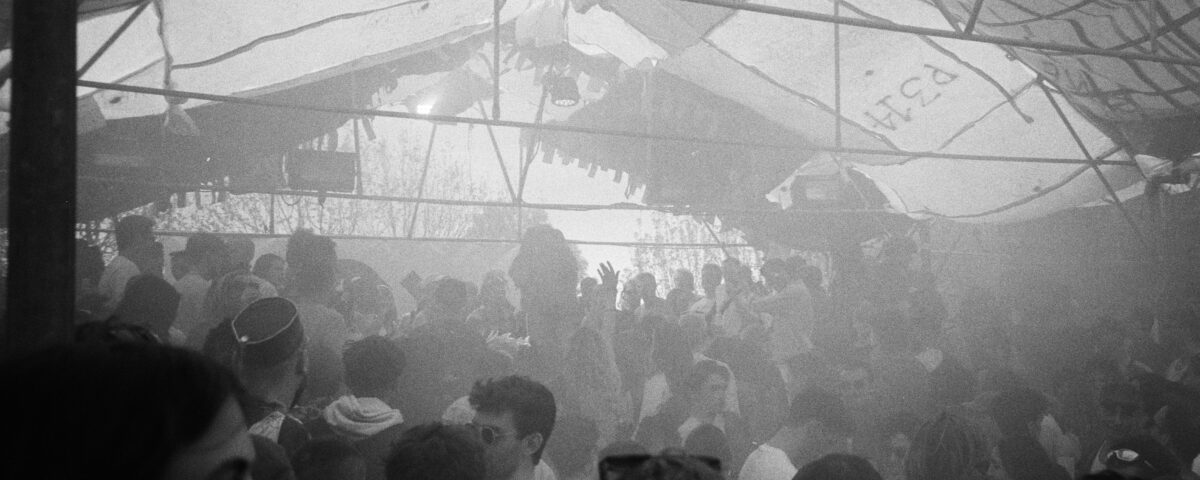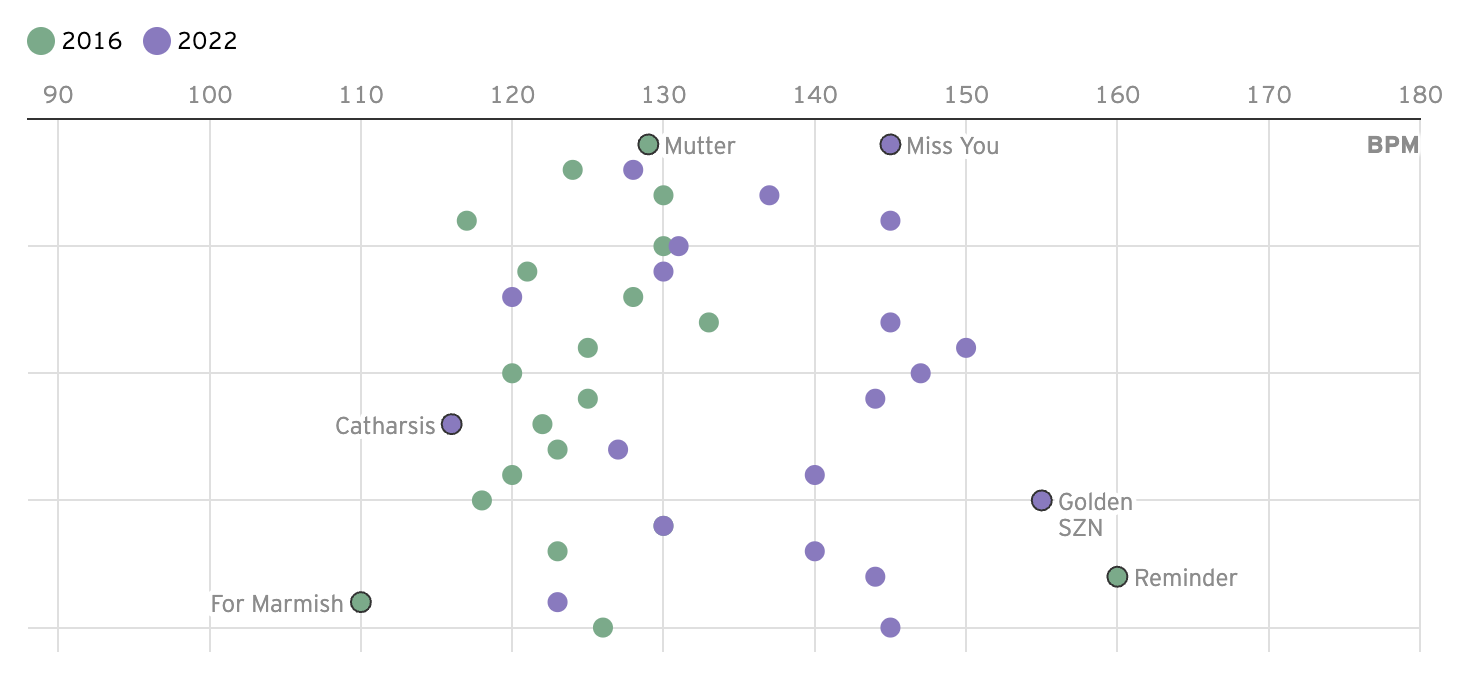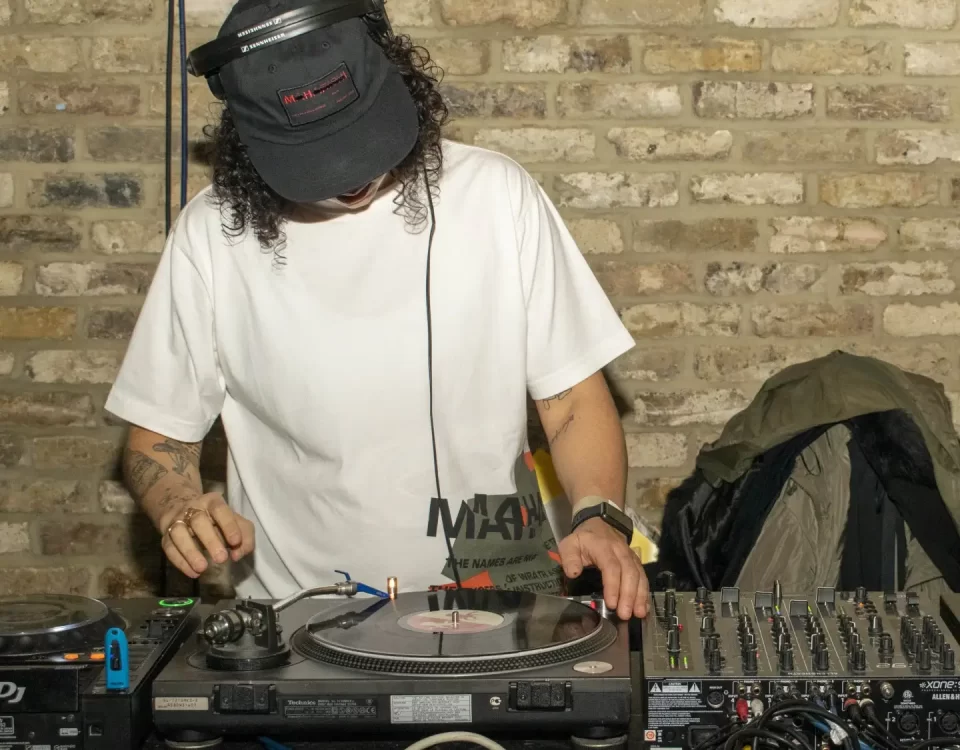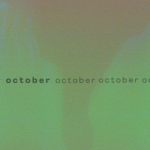
The month in music, October
November 14, 2023
Baby Ford: A look back at minimal’s most forward thinking figure
December 9, 2023Why has electronic music become so fast?
It’s a question myself and a friend asked on the way home from Manchester’s White Hotel back in August. Theories ranged and were as coherent as you'd expect from two guys walking back from a nightclub at 6AM.
We’d just witnessed several hours of tough and fast percussive House, courtesy of Leon Vynhall.
It was a far cry from his earlier sets we’d seen, and the gulf in tempo between his selections and productions was stark.
Leon Vynhall opting for a high octane, dark set in a club known for teasing such energy out of artists isn't necessarily significant or surprising, but it's more than anecdotes that tell the tale of rising tempos in Europe.
Work by Von Haluka Maier-Borst for RBB evidences a new demand for pop-infused fast dance music. According to Maier-Borst, the rise of platforms like TikTok and Instagram go much further than other theories in explaining the trend.
Reading through the piece, it’s hard to argue against.
The scene is being shaped by a generation who grew up on social media, and the implications of this are probably further reaching than faster tempos and pop anthems getting a 4 to the floor makeover.
The most memorable sets, for me, are those that journey up, down and round. This can always be obtained at higher tempos, but a DJ needs the space, time and patience from dancers to do this effectively - social media can only be harming our ability to dish this out.
If our tastes are defined by 20 - 60 second “moments” on Instagram and TikTok, and our expectations are set by short clips of peak time drops, where does this leave artists that want to take sonic risks, push the envelope and take listeners with them to parts unknown?
It’s a topic that ties in well with criticism of the commercial festival scene, where DJs are crammed onto a single lineup and given a 2 hour slot (if that) to compete with peers for attention. In such an environment, what else can we expect other than excessive buildups and edits that can guarantee an immediate reaction from passers by.
This is a point argued by many, most articulately by DVS1.
Most are only going one way if they’ve been booked by Boiler Room or a large festival for an hour, and know much of the proceeding content will be split up into bite-sized chunks for a huge online audience. Understandably no one is taking any risks here, they’ve not been given the right platform to. The temptation to go for selections that will carry immediate impact and turn necks (either physically or in a digital sense) has to be significant.
But whilst fashionable to moan about a new Sugarbabes edit topping the Beatport charts, it’s also important to point out the positive driving forces.
Whether it’s Jeff Mills accelerating the sounds of Detroit, the slew of Dutch producers re-popularising gabber in the 2000s or even the pacier tempos of the early Tech-House scene in the late 90’s, the popularity of fast underground dance music writ large ebbs and flows.
We could just be looking at another cycle, this time with a poppy tinge.
Colombia's increasingly coveted club scene, spearheaded by BitterBabe, as well as the wider Miami sound typified by producers like Nick Leon add to this argument. As electronic music continues to settle across the globe and selectors in Europe look for inspiration past Berlin and Detroit, these vibrant international scenes could be influencing dancefloors back home, that’s got to be celebrated.
Whether or not social media's impact on electronic music is a net positive or negative is a ramble for another day (There's definitely some irony in criticising instagram, a platform where we promote material and events for no cost at all). Regardless, it’s important to bring some balance on this particular topic.
Scenes aren’t guarded anymore, you don’t have to be ‘in-the-know’ to discover an emerging underground sound and it’s ok to make music that doesn’t really sit within the confines of one particular sub-genre. Things are fluid, and the success of genre-hopping artists like Joy Orbison and Overmono are a testament to that, I think social media has played a big role here.
It’s guess work, but maybe consistent access to so many different types of music on platforms like Instagram and Youtube is resulting in an amalgamation of styles.
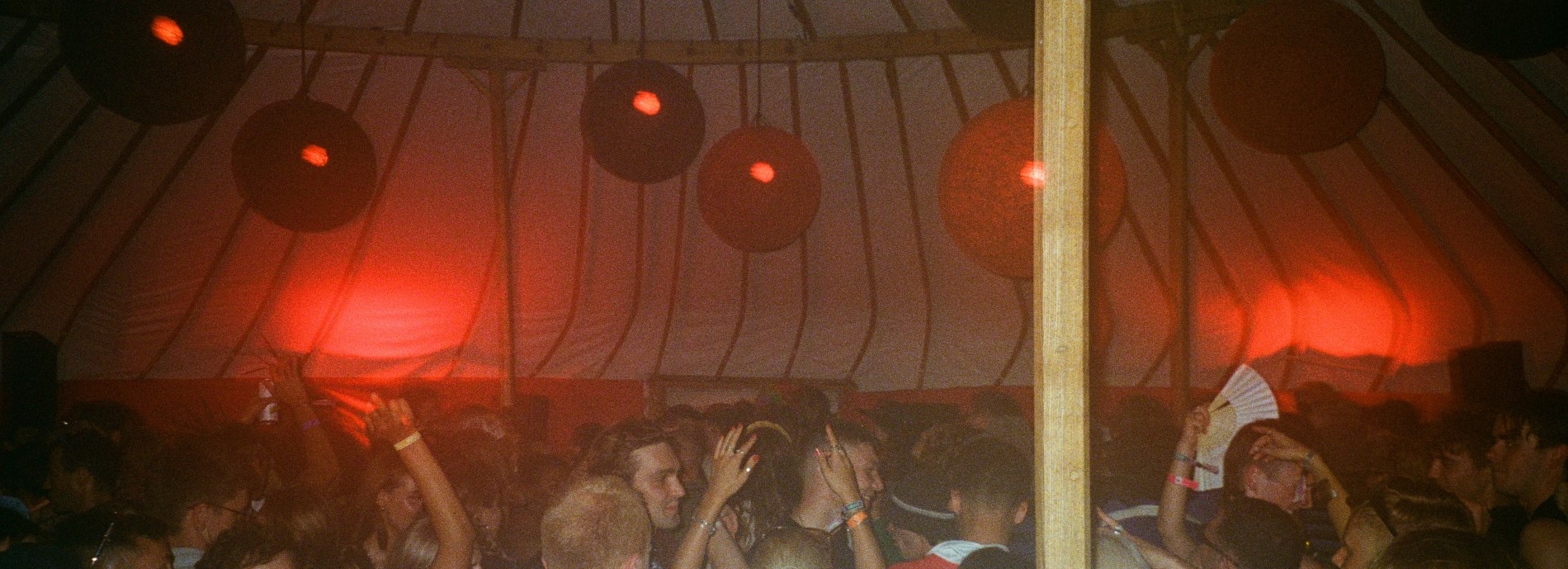
Whatever the case it’s important to refrain from instantly labelling a genre or trend that’s rooted digitally as ‘commercial’ or negative. As easy as it is to do, things are rarely so simple. Most of, if not all, youth and counter cultures will be influenced by social media in some way going forward, and this isn’t necessarily a negative.
No genre or trend finds success for a single reason, there is something provocative about pairing a noughties pop anthem with an aggressive driving four to the floor, and the paradox of chart topping artists getting plays in underground spaces brings with it unique energy, maybe this is the only explanation necessary.
At the end of the day we can spend a silly amount of time pondering why genres and trends come and go, but it’s not really what matters.
There’s enough space for faster dance edits to coexist with music that aligns to different tastes, and there always will be as long as we keep supporting the artists we love.
We’re by no means short of festivals that fly in the face of those more commercially driven, so as long as we keep backing the right ventures and keep having fun, everything will be just fine.

